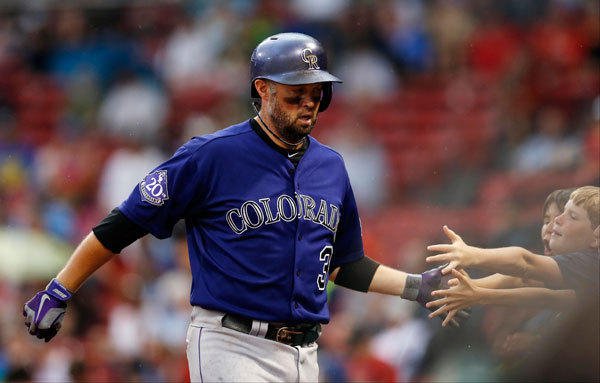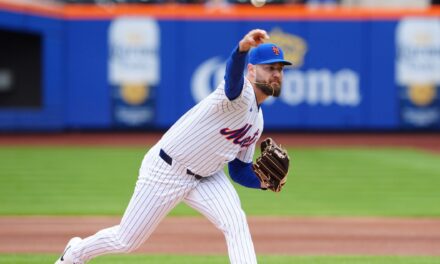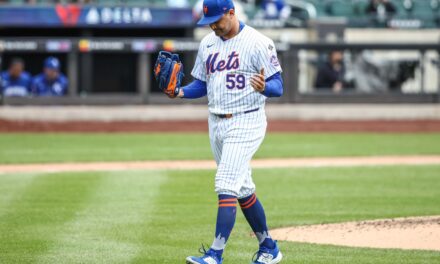
Sandy Alderson’s signing of Michael Cuddyer signaled to fans that the future is now for the New York Mets. Cuddyer has hit over .330 during the last two seasons, with his 2013 success leading the outfielder to the NL batting title. And with an average of 16.5 home runs per season over the last four years, the Norfolk native sports impressive power for a player on the wrong side of 30. However, as credentialed as Cuddyer is, his age, home park inflated stats, and the draft compensation, make signing the ex-Rockies outfielder the wrong decision for the Mets’ front office in my opinion.
Cuddyer enjoyed career-highs across the board in his last few seasons with Rockies, at an age when most ballplayers are caught in the midst of decline. In fact, even while battling injuries during the 2014 season, he still managed a .332 average with 10 home runs in only 49 games. But like every player that calls Coors Field his home, the batting average and power numbers are extremely misleading. In his 20 games in Colorado in 2014, Cuddyer batted to an unreal .400 mark, with 60% of his home runs, 74% of his RBI, and over 50% of his hits coming at home despite playing only 31% of his games in Colorado. Away from Coors, Cuddyer still posted a respectable .282 batting average, but this number was accompanied by a mediocre .316 OBP and a .734 OPS, .500 points below his home OPS.
To be fair, 49 games should not be the judge of a $21 million dollar contract, so let’s examine Cuddyer’s 2013 season and his overall career numbers to see if we can find any noticeable trends. During his batting title-winning season of 2013, he exhibited similar home/road splits in favor of Colorado. While he finished the year out with a .331 average, Cuddyer hit only .311 on the road in stark contrast with his far superior .356 batting average at home. A .311 average is nothing to sneeze at, but lets take a closer look.
While average can often be flawed statistic, batting average on balls in play (BABIP), is a solid indicator for whether a player can sustain newfound success. In this case, BABIP shows that the ex-Rockies’ 2013-14 resurgence is likely a career anomaly. When Cuddyer earned the title of NL batting Champ, he sported a career high BABIP of .382, topping his next highest career mark by over 30 points. Inevitably that number would fall in the following season, but it was Cuddyer’s road BABIP, not his home, that dropped precipitously in 2014. Despite hitting an overall .332, Cuddyer’s road BAbip fell over 50 points from his 2014 figure, to a number barely over .300. While some may point out that a small sample size leads to unreliable statistics, Cuddyer’s 2014 road BABIP of .303 actually varies by only .11 points from his career mark, while the .419 home BABIP he posted in the same season differs from that number by over .100 points.
From the information presented, I conclude that Cuddyer will produce around his 2014 road numbers, but nowhere near his overall output of the last two seasons. While the .280 batting average may be acceptable, it’s highly unlikely the 35-year-old left fielder will produce significantly more than 10-15 home runs and 55-65 RBI over a full season.
Furthermore, after missing most of last season due to various injuries, health has been a real concern for a man that will turn 36 before the Mets head north to Queens next season. Add on the fact that the Mets are sacrificing the 15th overall draft pick in 2015’s June Amateur draft, and it seems that Cuddyer makes much more sense as the final piece to a team with World Series aspirations, than to one that is still missing difference-makers and hasn’t produced a winning season since 2008.
Overall, I don’t think Michael Cuddyer will be an extremely bad investment for a Mets’ franchise desperate for veteran leadership and talent. However, when comparable and younger available players (Mike Morse, Alex Rios) could have brought similar production at a lesser cost without any draft pick compensation, committing $21 million dollars to Cuddyer becomes even more questionable. In short, the Mets’ first move was a decent signing in the offensively starved MLB, but cheaper and younger options that would not have mortgaged the future were available and worth investigating before sacrificing that draft pick.














